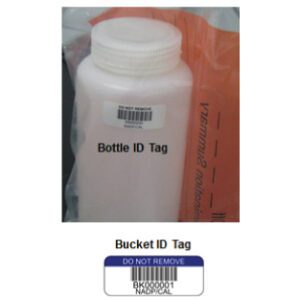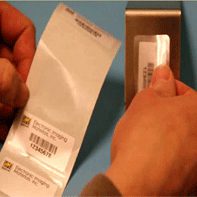In laboratory settings, effective labeling is crucial for maintaining organization, ensuring safety, and facilitating accurate data collection. Labels serve as the first line of communication regarding the contents and intended use of various samples, reagents, and lab equipment. However, common lab mistakes can lead to significant issues, including sample mix-ups, contamination, and compromised research integrity.
This guide aims to highlight the most frequent laboratory label mistakes and provide recommendations for avoiding them.

The Importance of Accurate Laboratory Labels
Before diving into common mistakes, it’s essential to understand why accurate labeling is so important. Proper labeling enhances safety and efficiency, allows for clear communication, and aids compliance with regulations and standards.
In a laboratory, labels must convey critical information such as:
- Sample identification
- Contents of the container
- Concentrations or dilutions
- Storage conditions (e.g., refrigerated, room temperature)
- Expiration dates
- Hazard warnings
The Impact of Laboratory Label Mistakes
Failure to provide accurate labeling information can lead to serious and far-reaching consequences in a laboratory setting. For starters, health hazards may arise when hazardous materials aren’t clearly identified. This can expose laboratory personnel to toxic substances or biological agents, increasing the risk of accidents, injuries, or even long-term health issues. Inadequate labeling can also lead to improper handling or storage, further heightening these risks.
Moreover, the integrity of research data is at stake. Inaccurate labels can result in sample mix-ups, where researchers unknowingly use the wrong sample for experiments or analyses. This not only undermines the validity of the research findings but may also necessitate extensive rework to gather new data, wasting valuable time and resources.
Additionally, there are financial implications to consider. When samples are contaminated due to poor labeling practices, laboratories may incur significant costs related to re-testing or disposing of compromised samples. This can lead to delays in project timelines and the potential loss of funding or resources, which can be detrimental to ongoing research efforts.
Common Laboratory Label Mistakes
While accurate labeling is essential in laboratory settings, many common mistakes can undermine safety and data integrity. Below are some of the most common laboratory label mistakes that can occur:
Inadequate Information
One of the most frequent labeling mistakes is providing insufficient information. Labels that lack essential details can lead to confusion and errors.
Common omissions include:
- Sample identification: Failing to clearly identify the sample or its source can complicate tracking and usage.
- Concentration levels: Not indicating the concentration of solutions can result in incorrect dilutions or applications.
- Date of preparation: Without a date, it’s impossible to determine the freshness or stability of the sample.
Solution: Always include all necessary information on labels. Use a standard format that includes sample ID, date, concentration, and any specific handling instructions.

Justin Z. | Genemarkers
“Genemarkers orders custom labels for building clinical testing kits. The labels always perform as expected.“
Illegible Handwriting
Illegible handwriting is a common issue in laboratories, especially in busy environments. If a label cannot be read easily, it defeats its purpose. Poor legibility can result from rushed labeling or inadequate writing instruments.
Solution: Use printed labels whenever possible. If handwriting is necessary, ensure that it is clear and legible. Choose a high-quality pen that doesn’t smudge, and consider using labels with a larger font size for improved readability. Additionally, use color-coding to better distinguish samples.
Incorrect Use of Abbreviations
While abbreviations can save space on labels, they can also lead to misunderstandings if not used properly. Commonly misunderstood abbreviations can create confusion regarding the contents or nature of the sample.
Solution: Use standard abbreviations that are widely recognized within your field. When in doubt, spell it out to avoid any ambiguity.
Neglecting Safety Information
Failing to include safety information, such as hazard warnings or PPE (personal protective equipment) requirements, is a critical mistake. This oversight can put laboratory personnel at risk and lead to serious accidents.
Solution: Incorporate hazard symbols and information about the necessary safety precautions directly on the label. Always follow OSHA and other regulatory guidelines regarding chemical safety labeling.
Improper Label Placement
Label placement is often overlooked but plays a vital role in visibility and accessibility. Labels placed on the side or bottom of containers may not be easily visible, leading to misidentification.
Solution: Ensure labels are placed prominently on the front and/or the top of containers, where they can be easily seen and read. This practice helps in quick identification and reduces the chances of mishandling.
Are you using barcode labels? Find out why you should.
Using the Wrong Label Material
The choice of label material can significantly impact the durability and legibility of the label. Labels that are not resistant to the laboratory environment (e.g., moisture, temperature fluctuations, or chemical exposure) may deteriorate quickly.
Solution: Use labels that are designed for laboratory use, such as waterproof or chemical-resistant materials. Make sure they are compatible with the storage conditions of the samples.
Failing to Update Labels
Outdated labels can lead to serious problems, particularly when the contents of a container change or when samples have expiration dates. Failing to update labels can cause confusion and lead to the use of expired or inappropriate samples.
Solution: Establish a routine for regularly reviewing and updating labels, especially for solutions or samples that have been modified or have expiration dates.
Inconsistent Labeling Practices
Inconsistent labeling practices can lead to confusion, particularly in collaborative environments where multiple researchers are involved. Different styles, fonts, or formats can create ambiguity.
Solution: Implement standard operating procedures (SOPs) for labeling across the laboratory. This includes specifying fonts, sizes, colors, and formats for various types of samples and reagents.
Overloading Labels With Information
While it’s essential to provide enough information, overloading labels with excessive text can be just as problematic. Too much information can make it difficult to find the key details quickly.
Solution: Prioritize the most critical information and use clear, concise language. Consider adding a QR Code to the label that will contain additional information.
Not Training Staff on Labeling Protocols
Inadequate training on labeling protocols can lead to mistakes, especially for new staff or students. If individuals are not aware of the importance of accurate labeling, they may overlook key details.
Solution: Provide comprehensive training for all laboratory personnel on proper labeling practices. Regular refreshers can help reinforce the importance of accurate labeling and keep everyone informed of any updates or changes to procedures.
Summary
Accurate labeling in laboratories is vital for ensuring safety, organization, and the integrity of research. By recognizing and addressing common labeling mistakes, laboratory personnel can significantly reduce the risk of errors and improve overall efficiency.
Implementing standard operating procedures, investing in quality labeling materials, and fostering a culture of awareness and training will go a long way in enhancing labeling practices. In the fast-paced world of research and experimentation, attention to detail in labeling can make all the difference between success and costly errors.
By following this guide, laboratories can improve lab safety and a more efficient working environment, ultimately contributing to more reliable and valid research outcomes.
Get Custom Laboratory Labels With Electronic Imaging Materials
At Electronic Imaging Materials, our laboratory labels are engineered to withstand extreme environments. Whether you need labels for vials, test tubes, slides, or medical devices, we provide a diverse array of customizable solutions that ensure accuracy, tailoring details to your facility’s specific needs. From chemical resistance to cryogenic storage, our labels are designed to stay intact and legible in any condition. Contact us today to start creating your next label.





